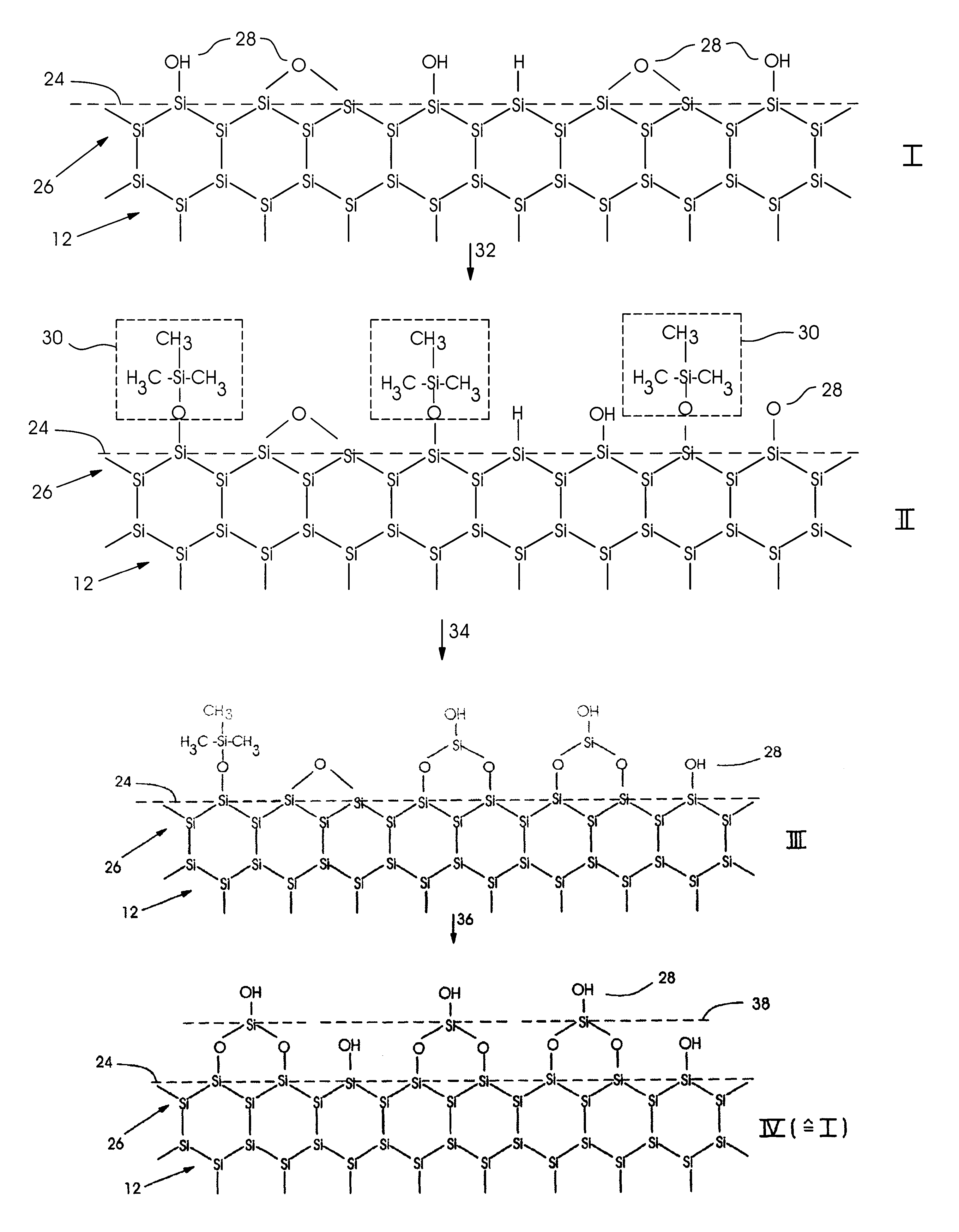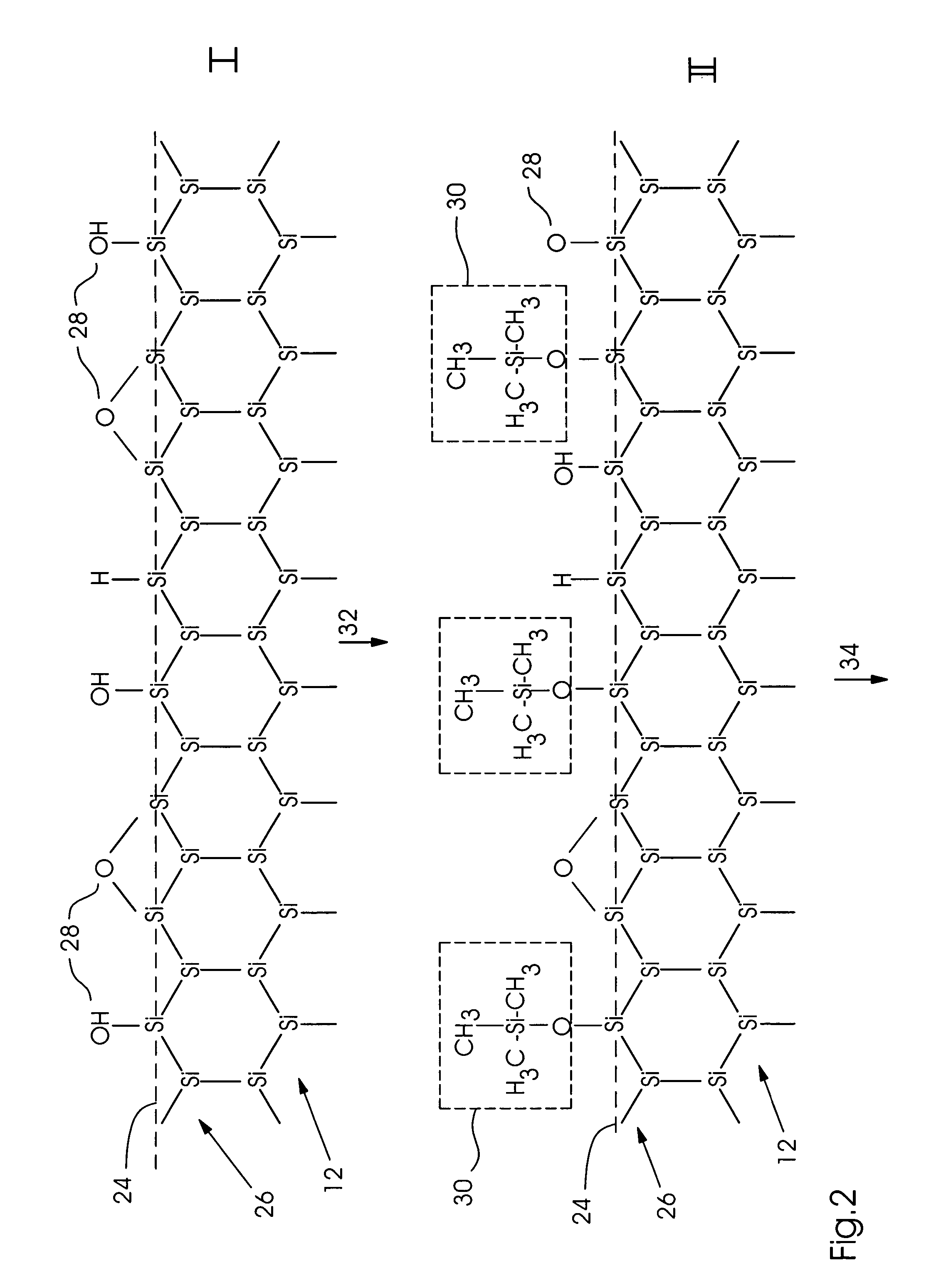Printing form and method for modifying its wetting properties
a technology of wetting properties and printing forms, applied in the field of printing forms, can solve the problems of limited printing forms produced in accordance with this method
- Summary
- Abstract
- Description
- Claims
- Application Information
AI Technical Summary
Benefits of technology
Problems solved by technology
Method used
Image
Examples
Embodiment Construction
[0036]In FIG. 1, the method according to the present invention is schematically shown. A printing form 10 has a plate-shaped design and may be accommodated on a printing-form cylinder, in particular in a printing press. Printing form 10 has a surface 12 which has inorganically bonded silicon. In its original state, especially following its manufacturing process, this printing form 10 is typically covered with a native oxide layer having a thickness of a few nanometers.
[0037]In a first method step according to the present invention, printing form 10 is provided with a defined, substantially hydrophobic surface. For this purpose, surface 12 of printing form 10 is terminated using organic terminal groups or fluorinated organic terminal groups. The free valences of the silicon surface atoms are saturated by the corresponding terminal groups, in particular aryl terminal groups, alkyl terminal groups or fluoralkyl terminal groups.
[0038]At this point, hydrophobic region 14 of printing form...
PUM
| Property | Measurement | Unit |
|---|---|---|
| thickness | aaaaa | aaaaa |
| thickness | aaaaa | aaaaa |
| wavelength | aaaaa | aaaaa |
Abstract
Description
Claims
Application Information
 Login to View More
Login to View More - R&D
- Intellectual Property
- Life Sciences
- Materials
- Tech Scout
- Unparalleled Data Quality
- Higher Quality Content
- 60% Fewer Hallucinations
Browse by: Latest US Patents, China's latest patents, Technical Efficacy Thesaurus, Application Domain, Technology Topic, Popular Technical Reports.
© 2025 PatSnap. All rights reserved.Legal|Privacy policy|Modern Slavery Act Transparency Statement|Sitemap|About US| Contact US: help@patsnap.com



